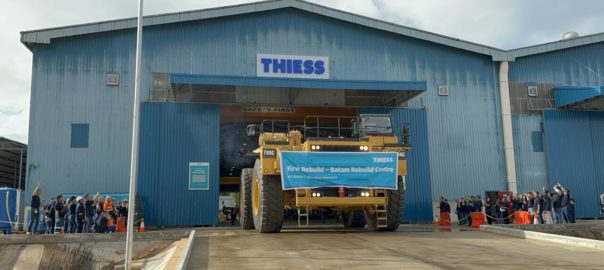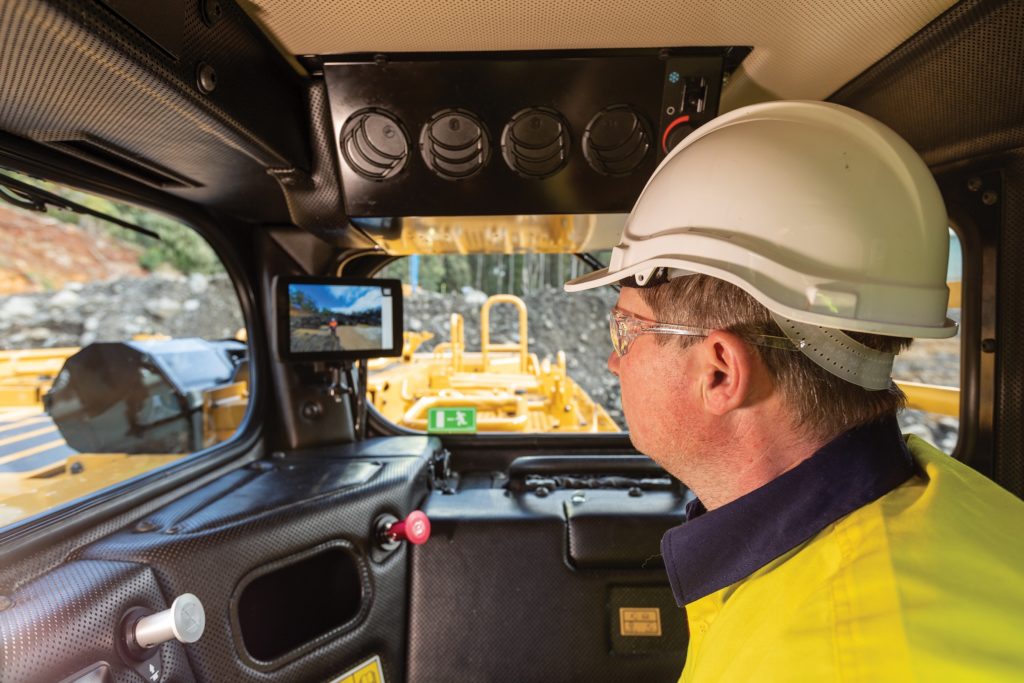It has been a busy few months for mining services provider, Thiess, having announced a planned acquisition of Australia-based underground metals business PYBAR Holdings Limited and its 100% subsidiary Pybar Mining Services Pty Ltd, plus released a comprehensive sustainability report detailing its progress towards its 2025 decarbonisation target.
The company also celebrated its 90th anniversary earlier this month, paying respects to its origins as a small farming and roadworks company, Thiess Bros, which began operating in rural Australia in 1934.
IM recently put some questions to Michael Wright, Thiess Group Executive Chair and CEO, on the company’s sustainability plans and what PYBAR could bring to the group.
IM: How do you see the addition of PYBAR complementing your sustainability aims/targets? Has PYBAR been engaged on underground mining services contracts looking to leverage low- (diesel-electric/hybrid) or no-carbon (battery) solutions for load and haul, for example?
MW: The acquisition of PYBAR further accelerates our strategy to diversify our commodities portfolio and bring a increasingly greater focus on metals and minerals. PYBAR has significant expertise developing underground copper and gold projects, such as the Eloise Mine, owned by AIC, and the Carrapateena Mine, owned now by BHP.

We are currently planning and engaging with PYBAR, prior to them joining the Thiess Group once the customary sale conditions are satisfied and the acquisition process is finalised.
Thiess Group companies all play a part in efforts to improve the sustainability of mining globally, and to achieve our target of net zero Scope 1, 2 and 3 emissions from diesel combustion by 2050. Once PYBAR is part of the Group, we will work with them on initiatives to achieve this target.
IM: How do you see your new underground offering competing with the likes of Barminco, Byrnecut and Macmahon? What will your unique proposition be to the market?
MW: One of PYBAR’s key competitive advantages is their long-standing client relationships. They have a well-deserved reputation for being an experienced underground metals and minerals hard-rock mining specialist.
Thiess currently operates underground in Mongolia, and having PYBAR as part of the Thiess Group will re-establish our presence in the Australian underground mining market, and enable us to expand our service offering to our clients.
Thiess Group companies will work with PYBAR to optimise efficiencies and leverage opportunities from our combined strengths and client relationships, while maintaining and growing the PYBAR business.
IM: Are there any technology areas that PYBAR has been involved with in the underground mining space that complement your own surface mining work with automation and electrification?
MW: Thiess has been on an autonomous mining journey since 2012, and today our fleet includes 21 autonomous haul trucks, nine autonomous drills and six semi-autonomous dozers. Through MACA also, the group has progressed vendor-agnostic autonomy and electrification. So as a group, we have a strong team and strong focus on both autonomy and electrification.

Similarly, PYBAR has been on a technology journey. In 2019, they deployed two Cat R1700 underground loaders at Dargues Gold Mine to prepare for its advanced underground automation. The new machines were equipped with Cat’s next generation Command for underground technology, enabling the machines to be remotely controlled from the surface from early-2020 – realising significant productivity, efficiency and safety gains.
There is significant opportunity bringing PYBAR into the Thiess Group.
IM: Following the publication of your 2023 sustainability report, can you tell me anymore about the hybrid excavator trial you are planning in Indonesia? Also, what vehicles are to be involved in the battery-powered light/medium trucks in Australia work you are due to carry out this year? What about the plans for MACA’s fleet retrofit solutions in Australia? Are these solutions soon to start up at Karlawinda?
MW: Our hybrid excavator trial started last month at one of our Indonesian projects. Two 30 t hybrid excavators are being tested as part of our commitment to reduce our emissions. We’re monitoring the trial progress, and will provide an update in our 2024 sustainability report.
We have two light battery-electric trucks due to arrive in Australia in coming weeks, which will be deployed to two of our projects, and are progressing the installation of the charging infrastructure at the selected sites.
Work also continues at MACA to develop a retrofitting solution for existing fleet to reduce emissions at a lower initial capital cost and in a shorter time frame than new electric haul trucks. We’re continuing detailed engineering studies, with the plan to deliver the first project in coming months.
IM: Anything else to add on the topic of mining technology as it relates to your net-zero journey?
MW: Our ambition is to achieve net zero Scope 1 and 2 emissions, and Scope 3 emissions from diesel combustion in our operated fleet. We are pleased with our progress to date and are on track to meet our 2025 Scope 1 and 2 emissions target (excludes Scope 1 and 2 emissions from MACA civil projects. We will look to develop a Scope 1 and 2 emissions reduction target for MACA civil division in 2024).
We continue to invest in and trial a range of transitional lower carbon technologies with gas and hydrogen trickle feed options. In 2021, we joined the Hydra Consortium, which is investigating the use of renewable hydrogen to power mining fleets. After construction and trial of their first hydrogen fuel cell-based powertrain prototype, Hydra is now working on phase 3 of the trial to continue to improve and test the technology.
As well, the Thiess Group recently became Toyota’s first customer for its locally-assembled hydrogen fuel cell stationary power generator, which we plan to trial in our mining operations in New South Wales.
We are also exploring dual-fuel vehicles. In 2023, Thiess successfully converted and trialled a dual-fuel Caterpillar 793F at a mine site in the Bowen Basin, with demonstrated reductions in emissions and diesel consumption. We continue to explore expansion opportunities for this and other technology trials.









